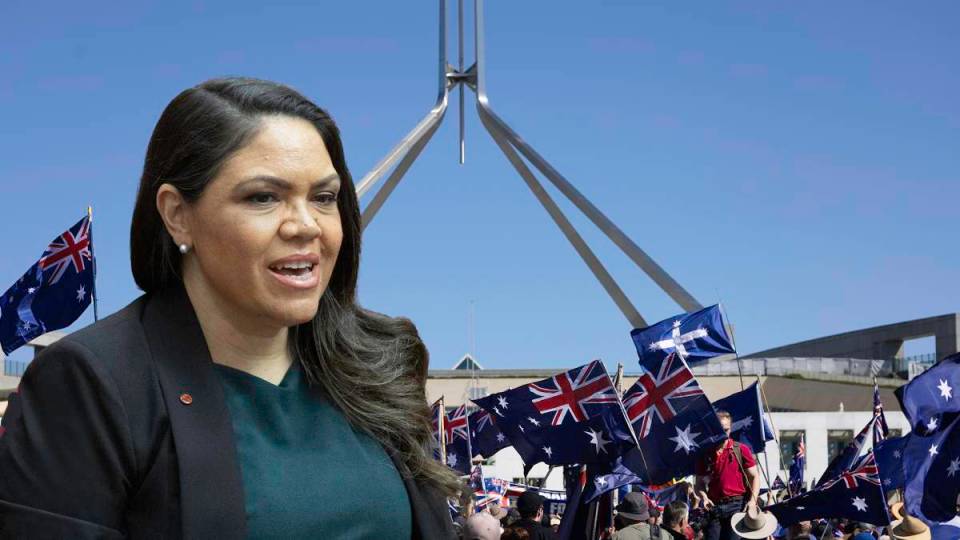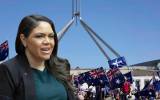


Among all the differences between Australia’s conservative and progressive parties, conservative parties too often have purposefully or unwittingly provided shelter for racists.
One of the first laws passed by the new Australian parliament in 1901 was the Immigration Restriction Act, which implemented the White Australia Policy. It enjoyed the support of all the major political parties for decades, until Liberal prime minister Harold Holt began dismantling it in practice.
His good work was followed by that of John Gorton and Billy McMahon. In 1973, Labor prime Minister gough Whitlam removed it from the statute books.
Yet from time to time, Coalition parliamentarians have sought political advantage in reviving race-based politics.
Most recently, Senator Jacinta Nampijinpa Price – who contested the deputy leadership of the Liberal Party only a couple of months ago – claimed the Albanese government had favoured Indian migrants because they tended to vote Labor.
Despite retracting these comments under pressure from within her own party, Price has refused to apologise for them.
To their great credit, Liberal leader Sussan Ley and Senator Dave Sharma repudiated Price’s comments. Indeed, there is no suggestion that Ley is racist. On the contrary, she seems a very decent person.
Whatever Price’s motivations in singling out Indian nationals in Australia’s immigration program, she has succeeded only in infuriating the Indian community.
Behind India, our next-largest source country for migrants is China. Again, leading Coalition parliamentarians have managed to insult Chinese Australians.
During the recent federal election campaign Liberal shadow minister Jane Hume remarked that there “might be Chinese spies handing out” how-to-vote cards for Labor minister Clare O’Neil.
A video of these remarks was reportedly viewed on WeChat up to 500,000 times in just 24 hours.
Many in the Chinese community appeared to draw the conclusion that the Liberal Party just didn’t trust them. Labor held all its seats with large Chinese Australian enrolments and won at least one (Menzies) from the Liberals.
The Hume and Price controversies might be considered isolated incidents. But they are not. At the 2025 election the Liberal Party did a preference deal with One Nation.
Back in 1988, John Howard had told radio talkback hosts that he considered the rate of Asian immigration too high.
At the time I was a staffer to Bob Hawke. Hawke’s anger with Howard was palpable. Howard repeated his comments over several days, hoping to gain a political advantage for himself and the Liberal Party.
Hawke considered Howard’s opening of a political battlefront based on race reprehensible. He drafted a resolution to be debated in Parliament reaffirming its commitment to a non-discriminatory immigration policy.
The resolution acknowledged that a Liberal government, under Holt’s leadership, had been the first Australian government to adopt the principle of non-discrimination based on race.
Hawke asked me to sit in the advisers’ box as he spoke. I listened to his passionate speech as he expressed his deep beliefs, engendered in him by his father, Clem, a Christian preacher.
Three Liberals crossed the floor to vote with Labor, including a backbencher, Philip Ruddock, who later became immigration minister in the Howard government.
Add to this episode the false claims during the 2001 election campaign that asylum seekers had thrown their children overboard.
Howard insists he was not told before polling day that the claims were incorrect. But Liberal ministers were told. It didn’t suit them to correct the record.
In 2018, then home affairs minister Peter Dutton, who years earlier had left the chamber ahead of the apology to the Stolen Generations, inserted himself into the Victorian state election campaign by claiming that Victorians were scared to go out to restaurants because of “African gang violence.”
Not just gang violence but African gang violence.
All these interventions and remarks can be viewed in the context of the recent anti-immigration marches.
Public discussion about the level of immigration is perfectly legitimate and, indeed, desirable. But rally organisers handing their microphones to neo-Nazis is not.
Yes, there has been a lift in migrant arrivals, peaking in 2023 but subsequently subsiding. This was a catch-up for the Covid-period border closures.
Looking at migrant arrivals in the four pre-Covid years to the end of June 2020, they averaged 531,000 – under a Coalition government.
In the subsequent four years for which data is available, they averaged 495,000 – a reduction on the pre-Covid years.
Australia doesn’t have an immigration program purely out of good heartedness. We need migrants to freshen up the age profile of our population so that we don’t have too few young people earning the incomes and paying the taxes to support older Australians in retirement. Successive intergenerational reports released by Coalition and Labor governments have told us that.
And we need younger migrants to fill skill shortages, such as nurses, physiotherapists and aged-care workers, as well as carpenters, electricians, plumbers, bricklayers and welders to build apartments and houses.
So, let’s discuss the size and skills composition of our immigration program but also try to make it an informed discussion. And may the discussion not be a ready-made platform for white supremacists and other assorted racists.
And let’s give credit where it is due. Among other Coalition leaders who have repudiated the use of race as a political weapon and have supported multiculturalism are Tim Fischer, Malcolm Turnbull and David Littleproud.
Craig Emerson is managing director of Emerson Economics. He was a minister in the previous Labor government and an adviser to prime minister Bob Hawke










